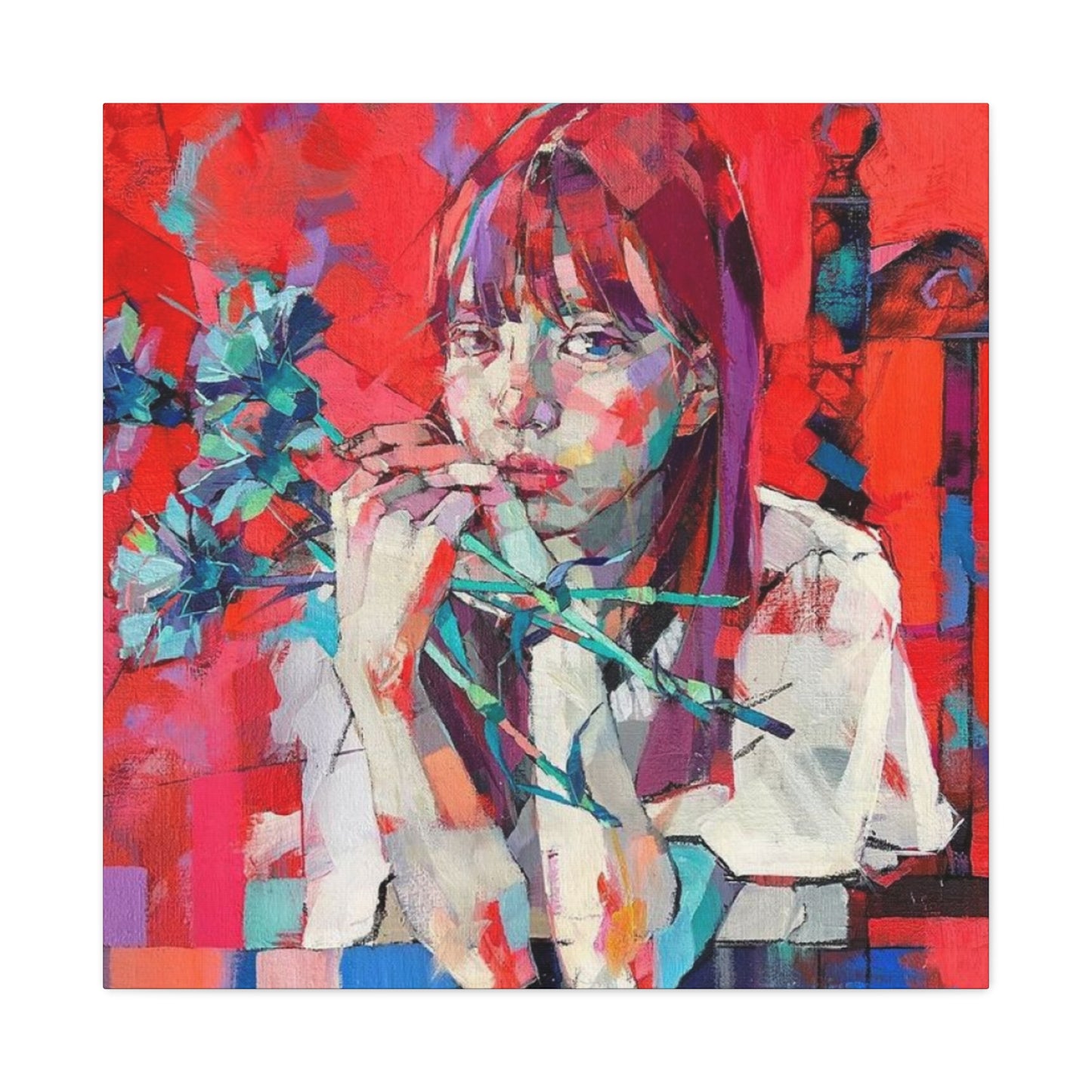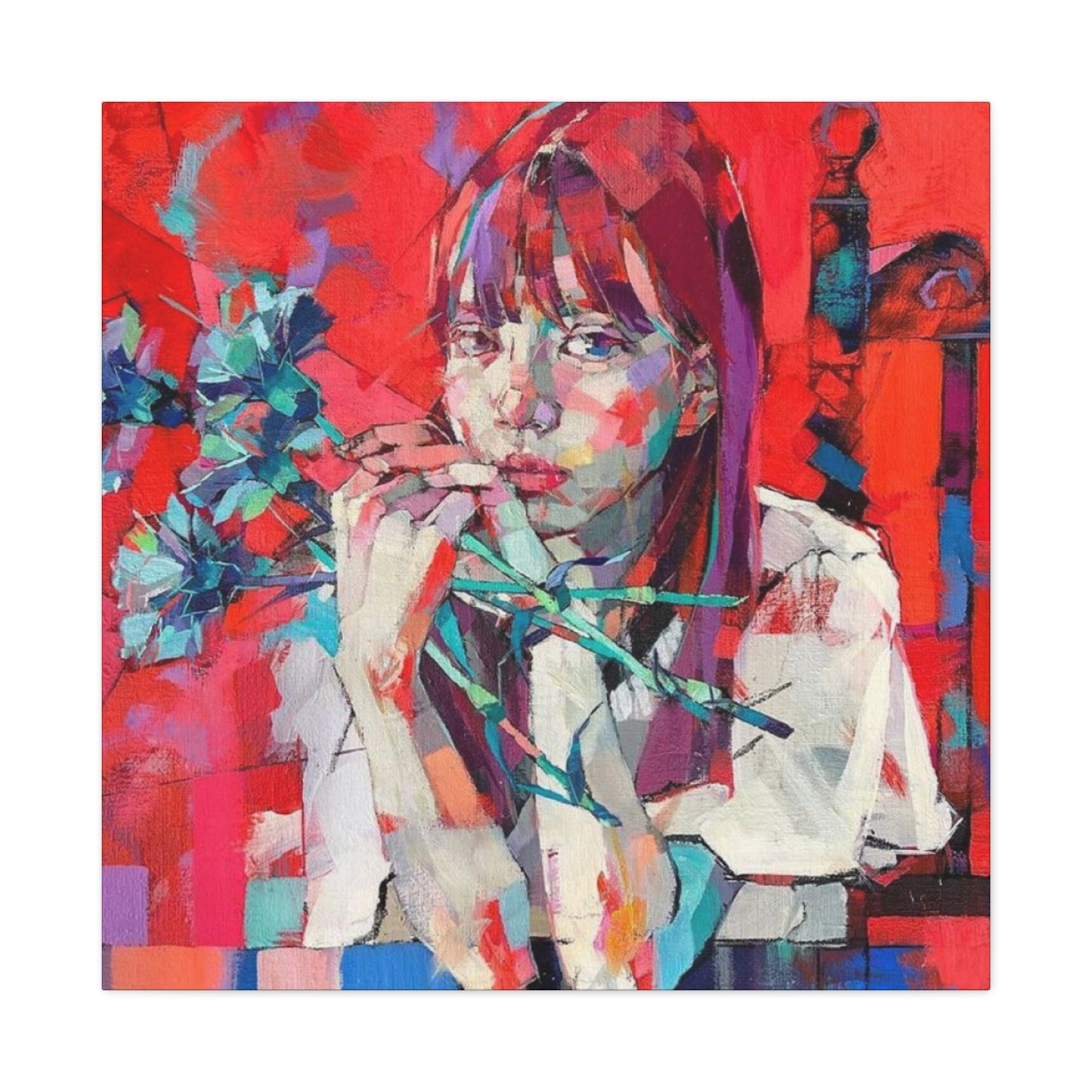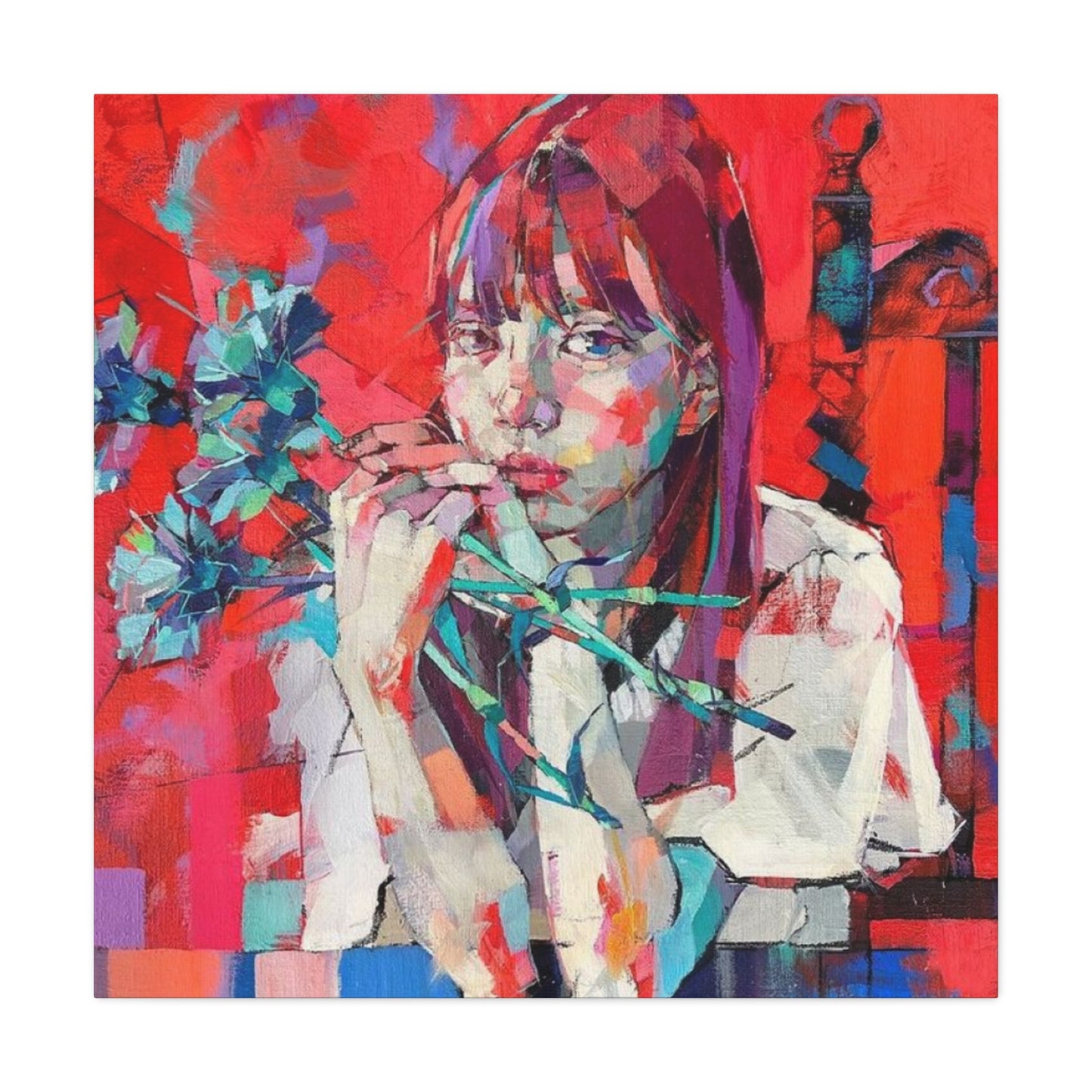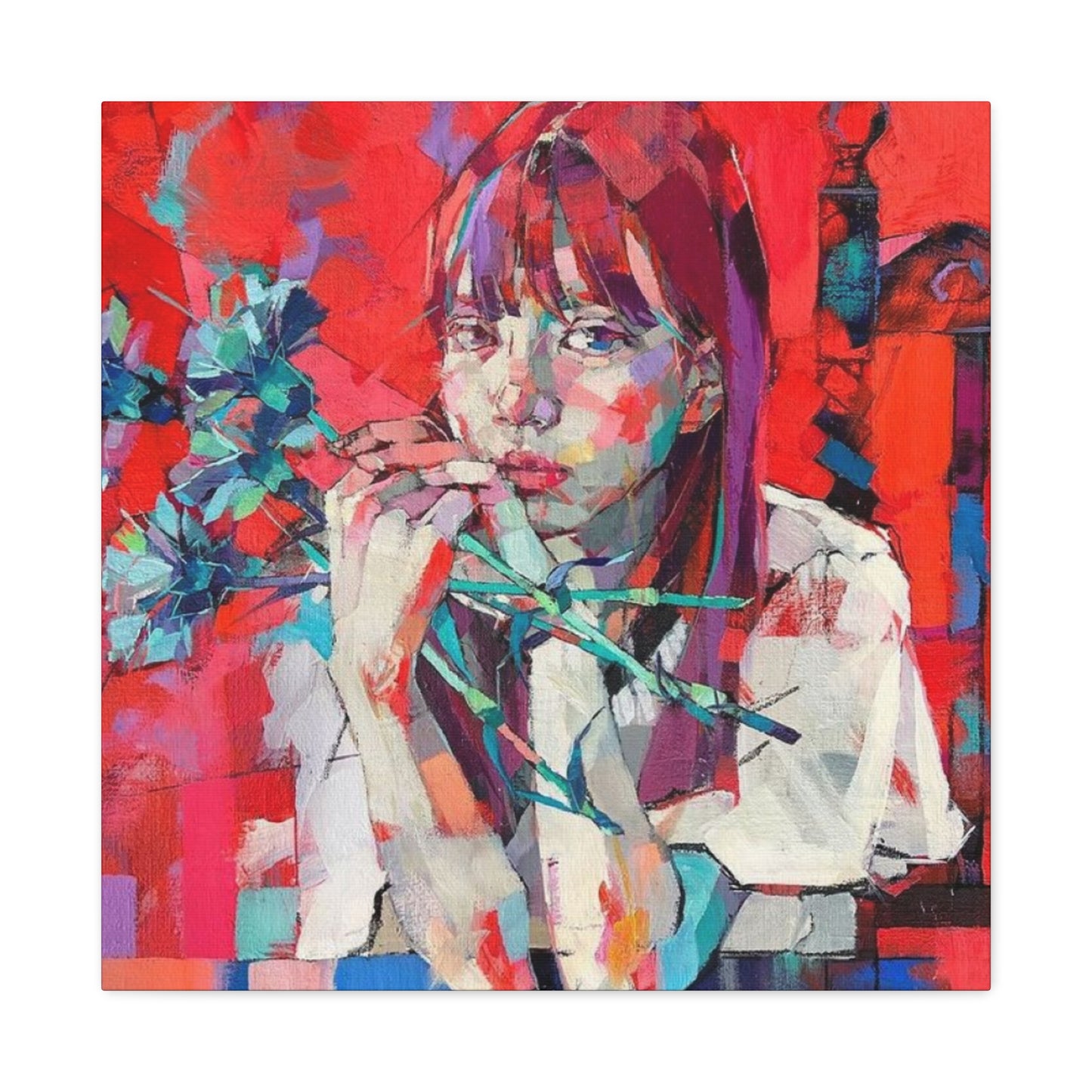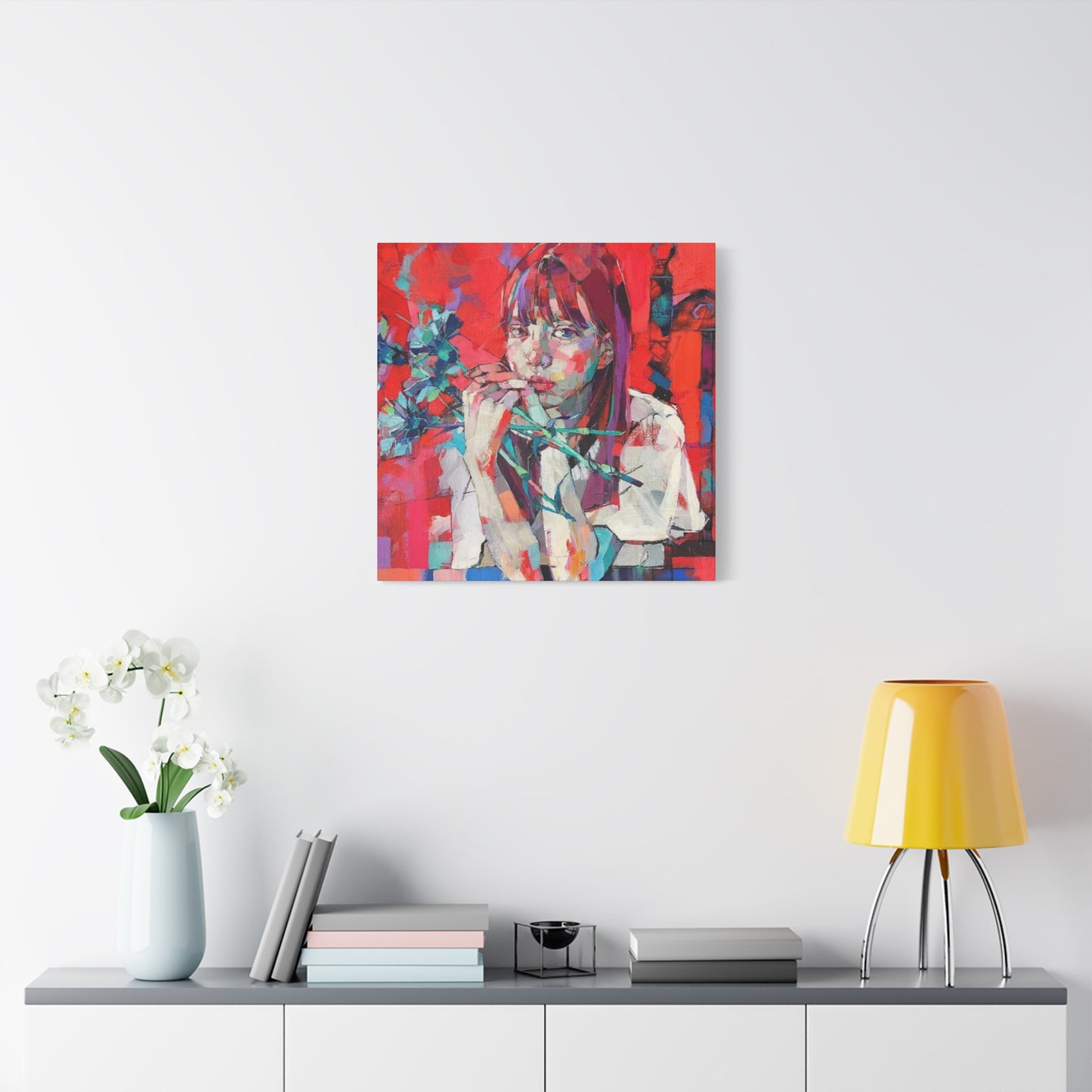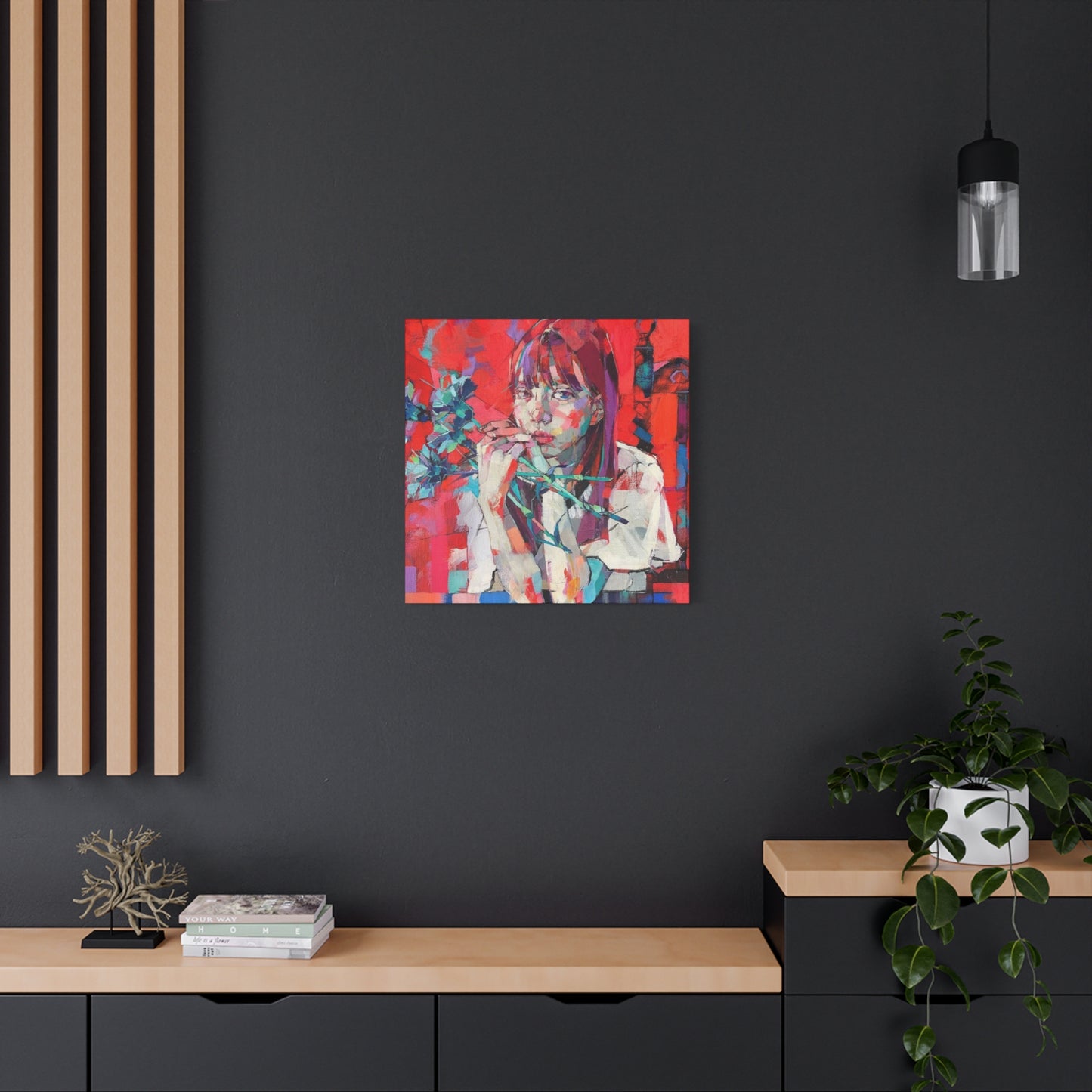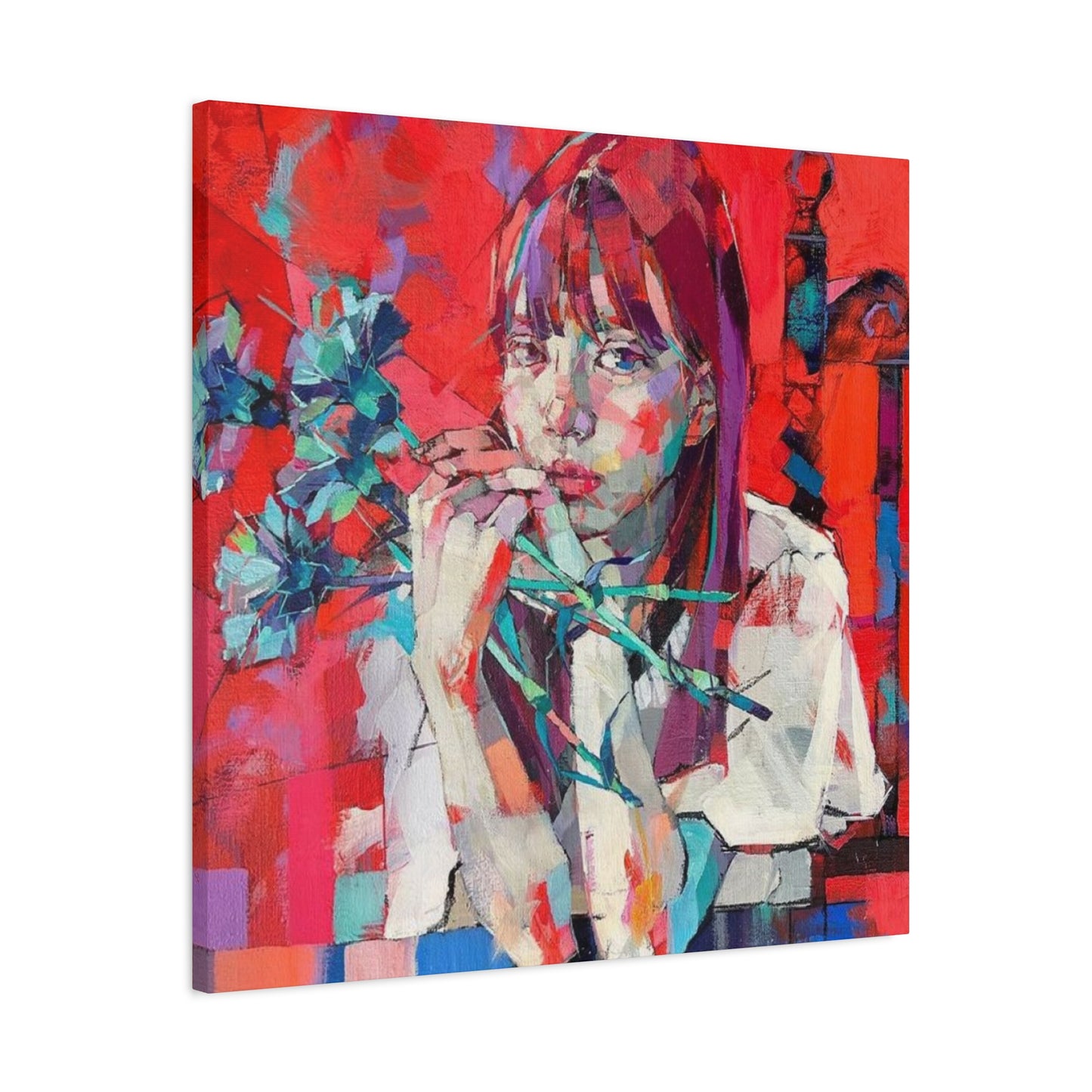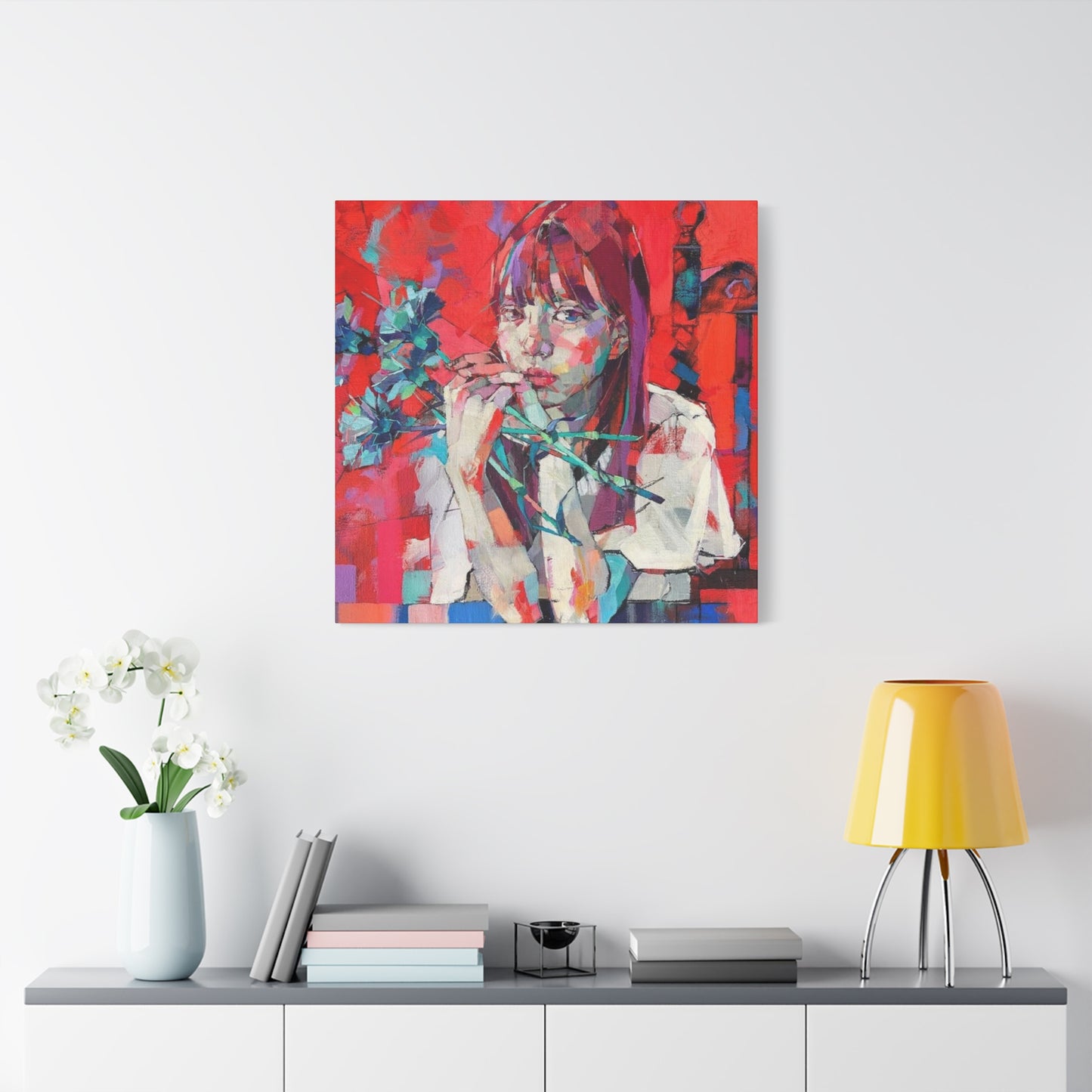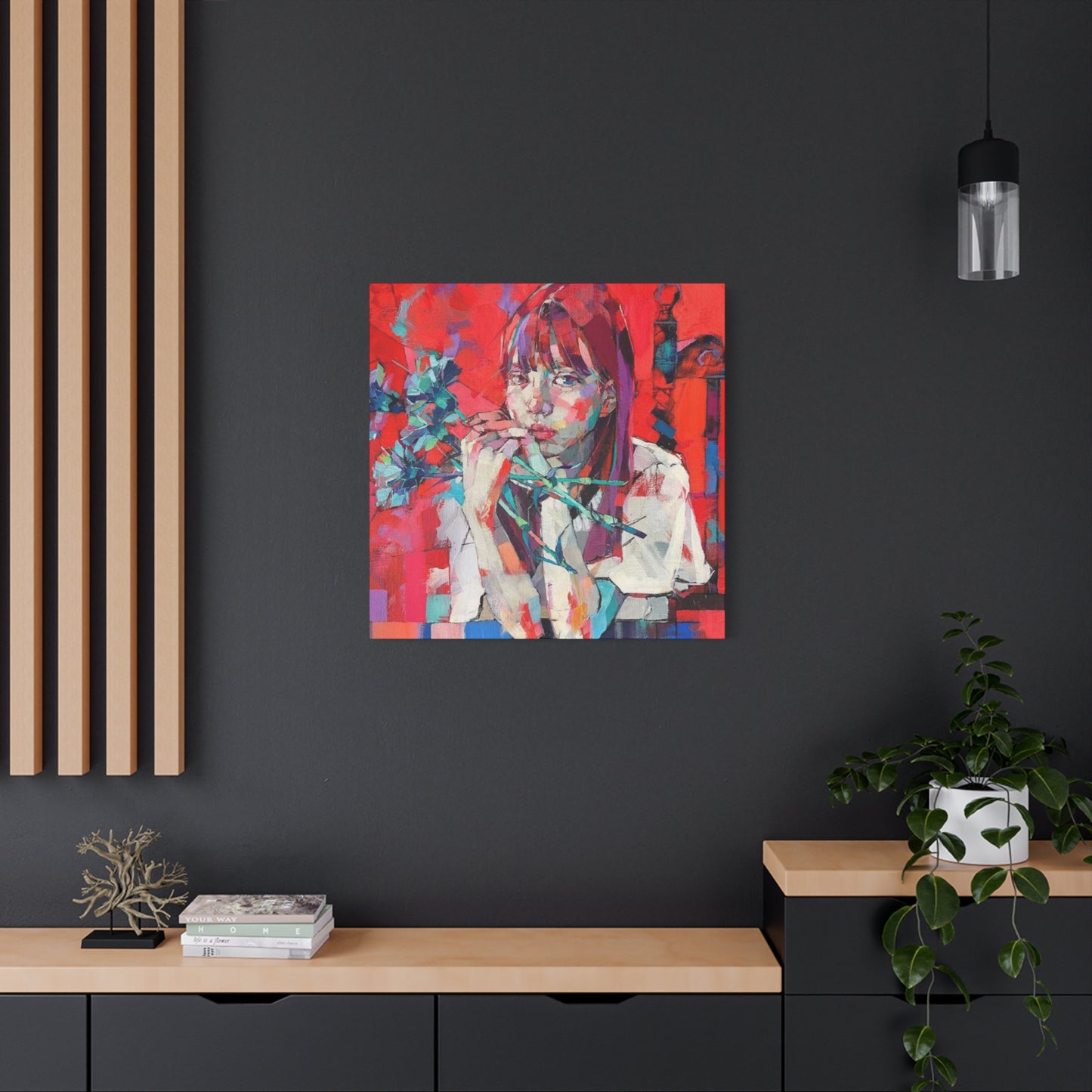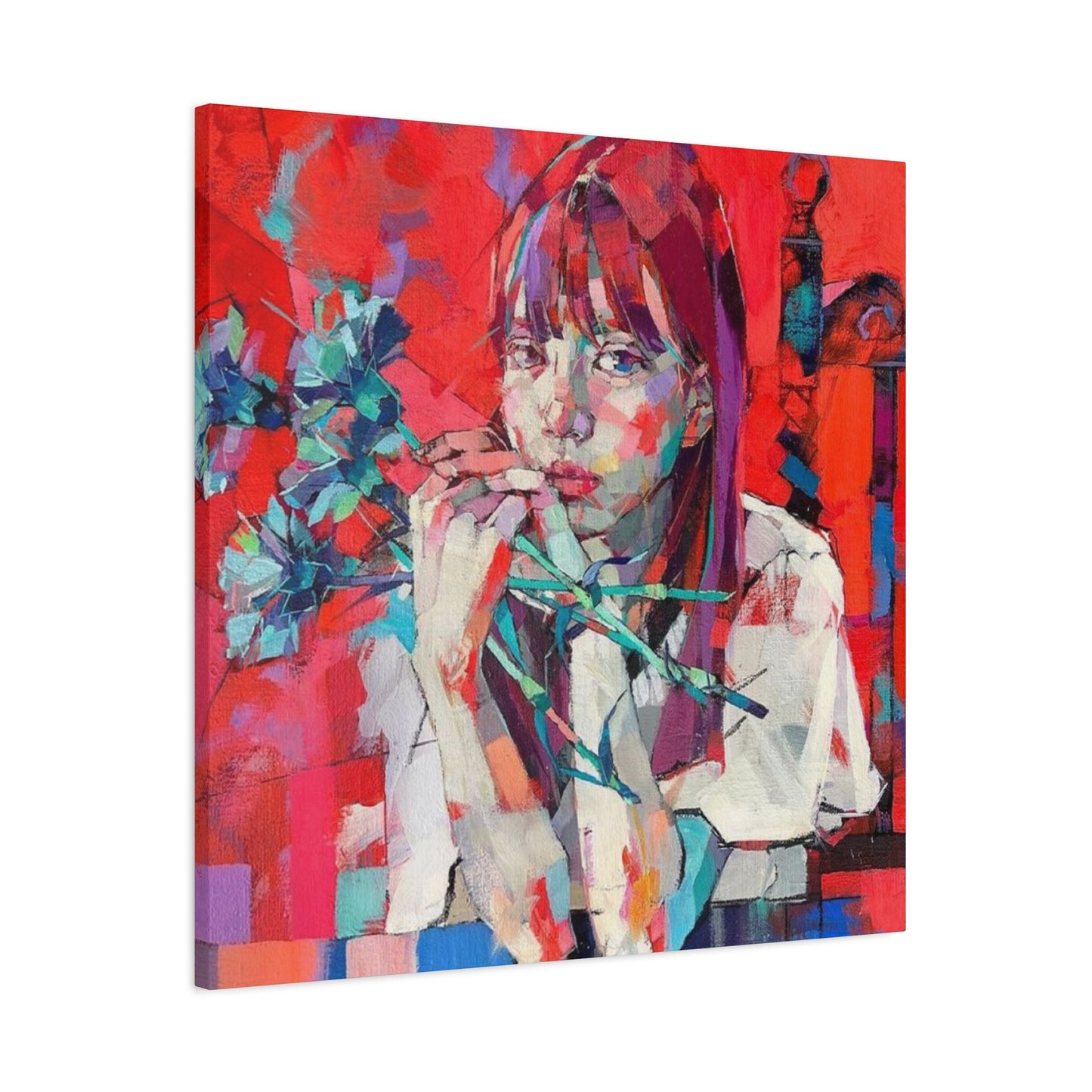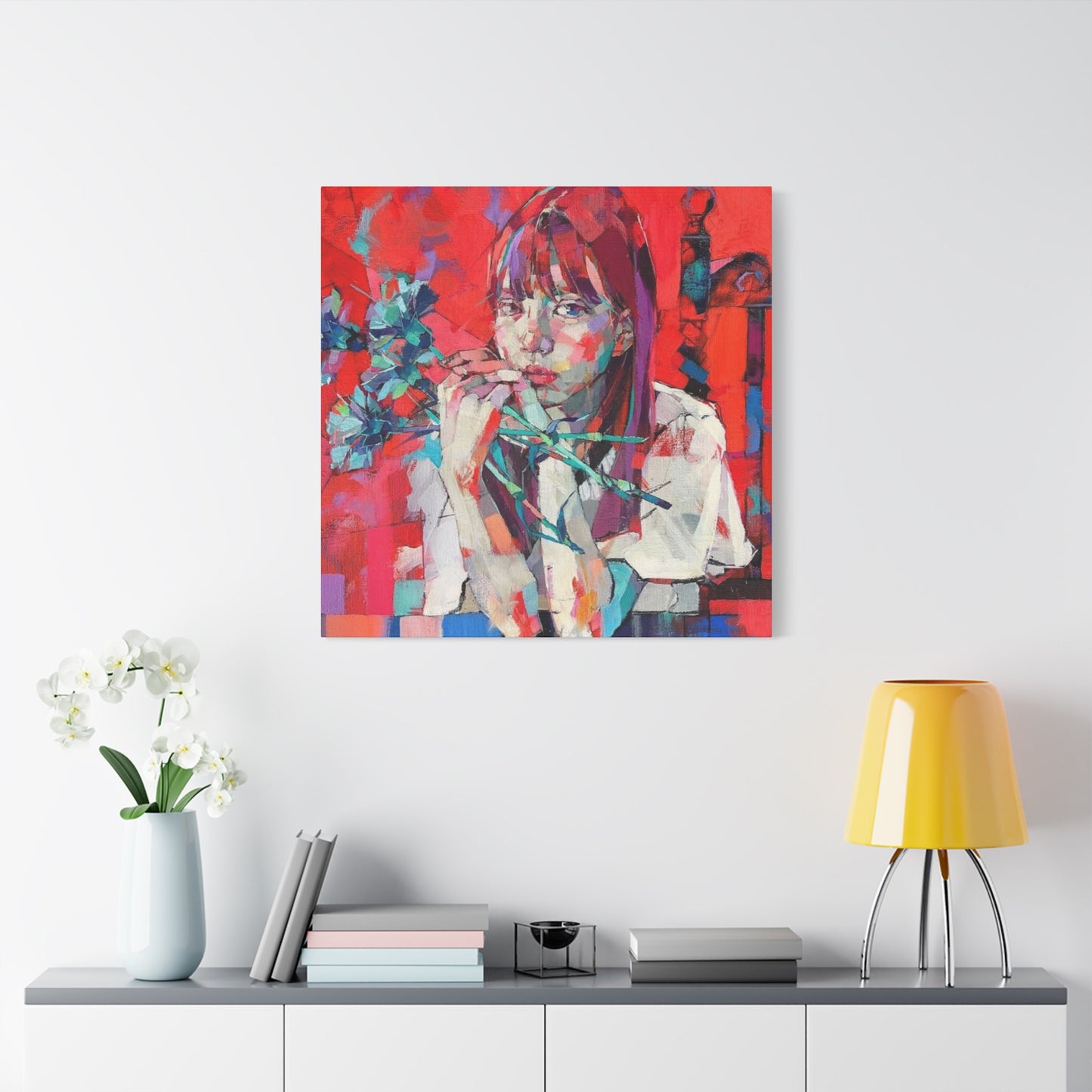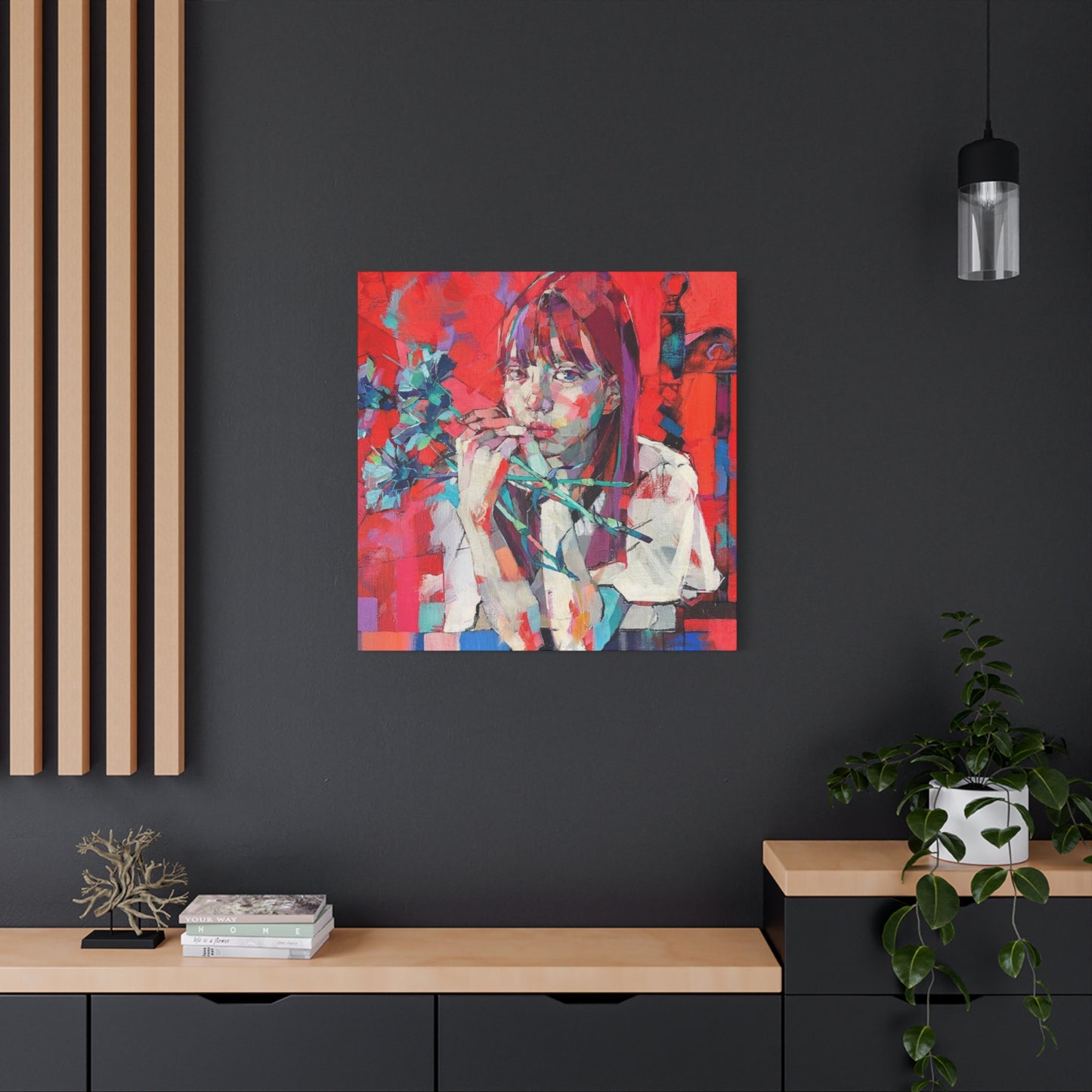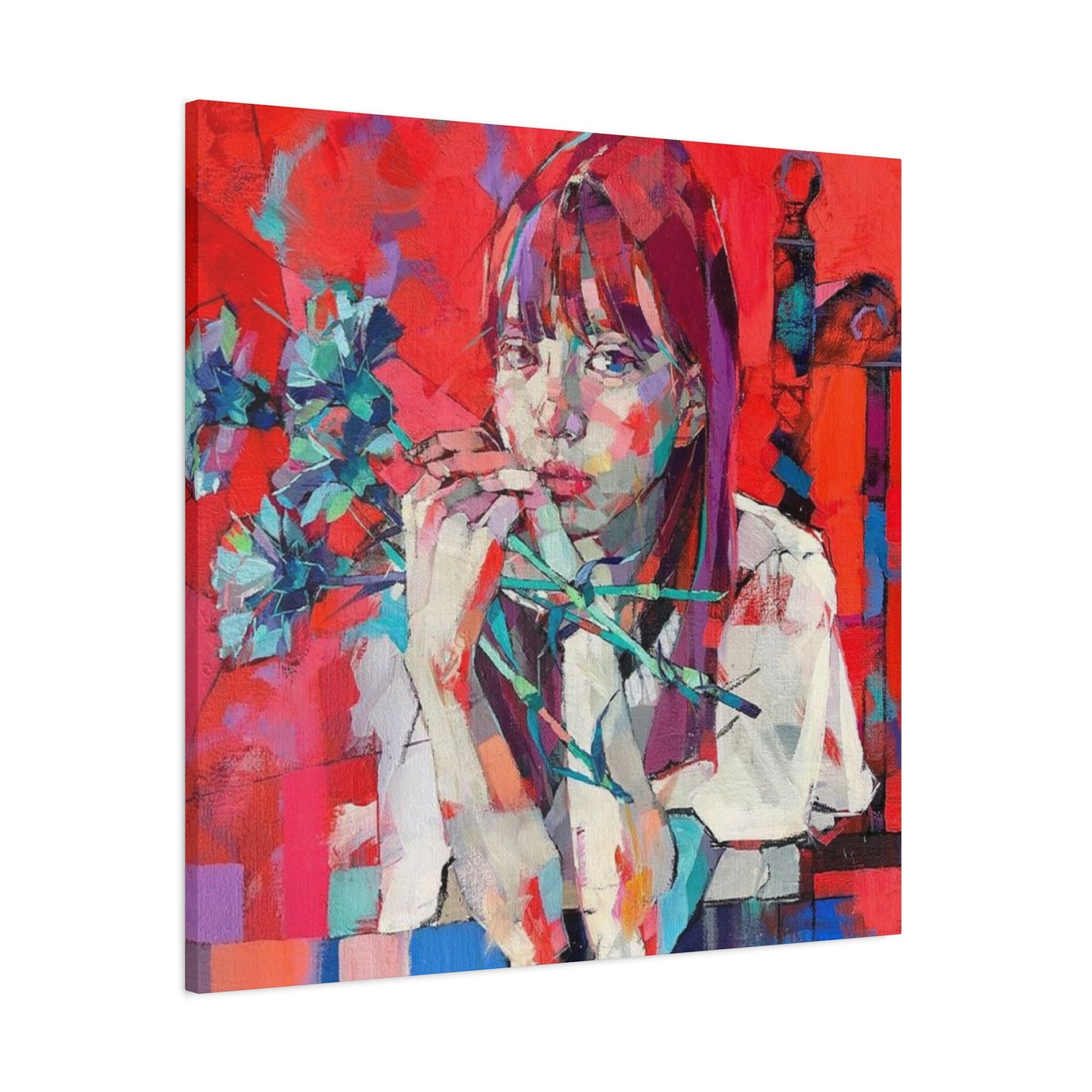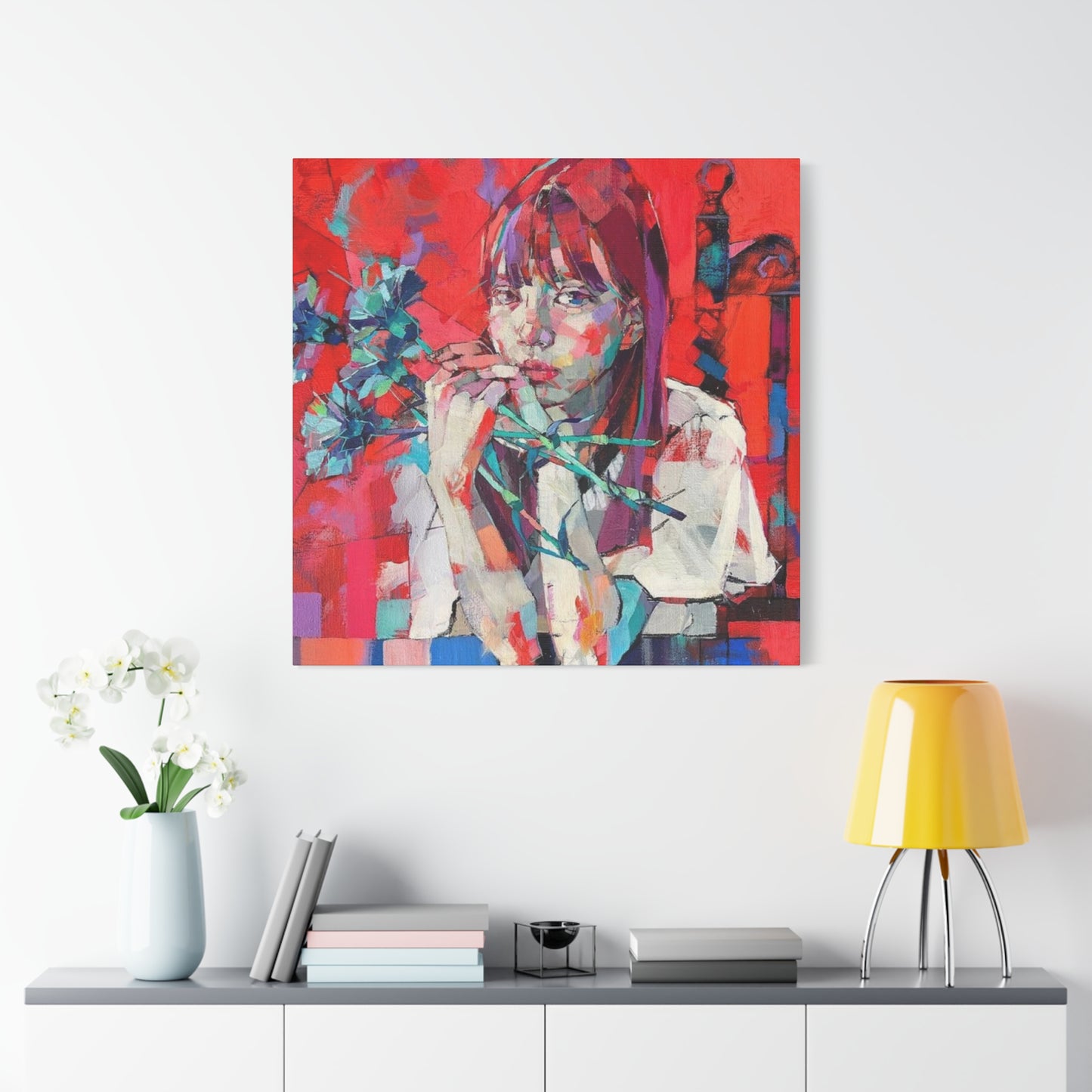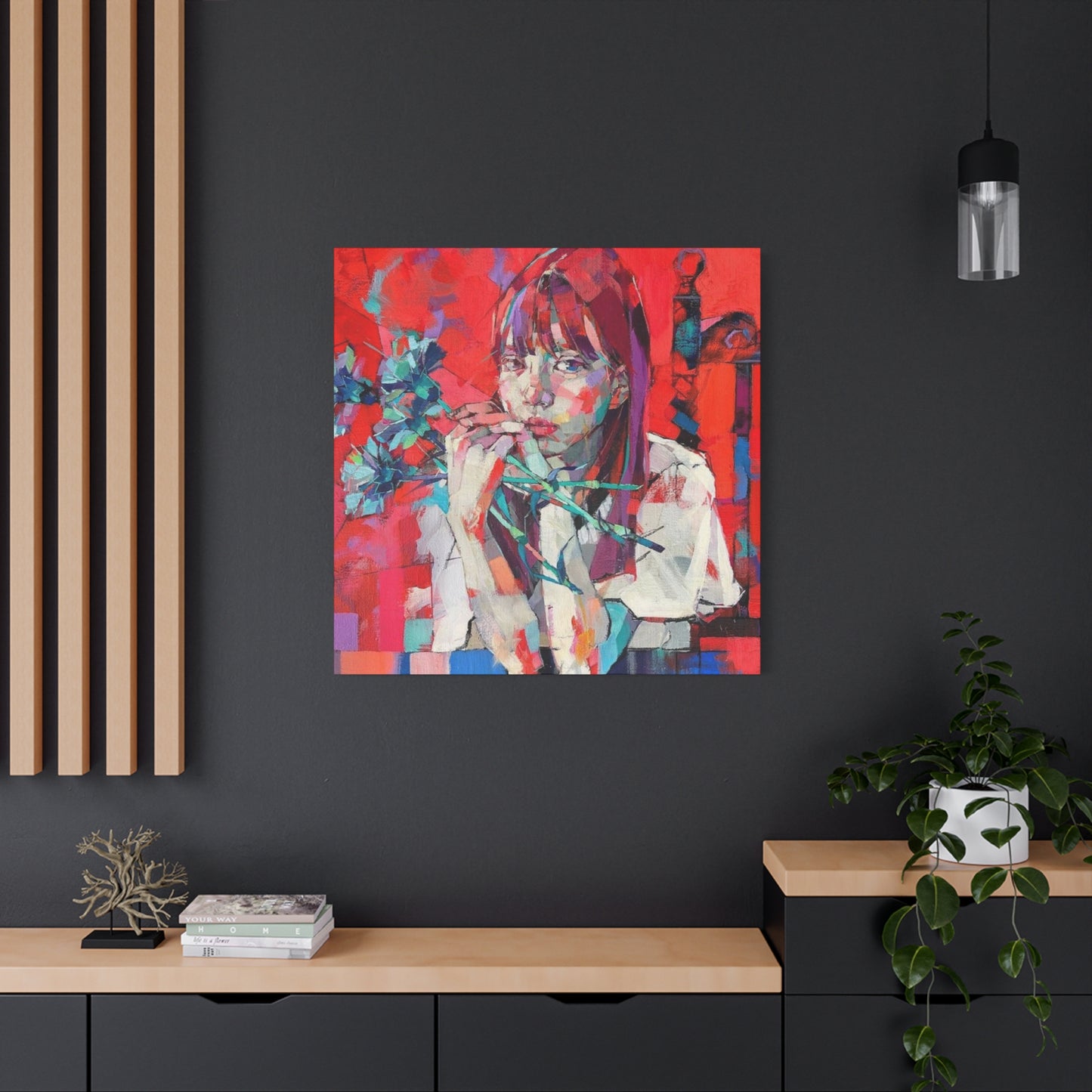Red Abstract Girl Mixed Media Wall Art: Creative Techniques and Artistic Expression
Mixed media artwork featuring abstract portrayals of girls in vibrant red tones has emerged as one of the most compelling forms of contemporary visual expression. These pieces combine various artistic materials and techniques to create powerful, emotionally resonant works that capture the essence of feminine strength, passion, and beauty through bold crimson hues and innovative compositional approaches.
The fusion of traditional painting methods with modern materials creates artwork that transcends conventional boundaries, offering viewers multi-dimensional experiences that engage both visual and tactile senses. Artists working in this medium explore themes of identity, emotion, and cultural significance while pushing the creative limits of what mixed media can achieve.
Red, as the dominant color in these compositions, carries profound psychological and symbolic weight. It represents energy, power, love, and transformation, making it an ideal choice for artists seeking to convey intense emotions and create memorable visual impact. When applied to abstract representations of girls and women, red becomes a vehicle for exploring feminine strength, vulnerability, and resilience.
The versatility of mixed media techniques allows artists to incorporate diverse materials such as acrylic paints, watercolors, pastels, fabric, paper, metals, and found objects. This combination creates rich, textured surfaces that invite closer examination and discovery of hidden details and meanings within each piece.
Contemporary collectors and art enthusiasts increasingly gravitate toward these dynamic works because they offer something unique for modern homes and galleries. Unlike traditional paintings confined to single mediums, mixed media pieces provide visual complexity and conceptual depth that resonates with diverse audiences seeking meaningful artistic connections.
The creation process itself becomes a journey of exploration, where artists experiment with color relationships, texture combinations, and compositional elements to achieve their desired emotional and aesthetic effects. Each piece tells a story through its layered construction, revealing new aspects of meaning as viewers engage with different elements and perspectives.
Layering Methods for Creating Dimensional Red Mixed Media Compositions
Successful layering in mixed media artwork requires careful planning and understanding of how different materials interact with one another. Artists begin by establishing a strong foundation using appropriate primers and base coats that will support subsequent layers without compromising adhesion or color integrity.
The initial layer often consists of broad color washes or textural elements that establish the overall mood and composition structure. Red tones at this stage might include deep burgundy, bright scarlet, or warm coral, depending on the intended emotional impact and aesthetic direction of the piece.
Building upon the foundation, artists introduce secondary elements such as drawing media, collage materials, or sculptural components. These additions create visual interest and depth while maintaining cohesion with the underlying color scheme. The key lies in balancing contrast and harmony throughout the layering process.
Transparent and semi-transparent materials play crucial roles in successful layering techniques. Glazes, tissue paper, and sheer fabrics allow underlying elements to show through while adding new color dimensions and textural variations. This approach creates complex visual relationships that reward careful observation and contemplation.
Strategic placement of opaque elements provides focal points and structural anchors within the composition. These might include bold brushstrokes, collaged photographs, or three-dimensional objects that serve as visual destinations for the viewer's eye while supporting the overall narrative flow.
Artists often employ masking techniques to preserve certain areas while applying subsequent layers. This selective approach allows for precise control over color relationships and prevents unintended mixing that could muddy the desired visual clarity and impact.
The timing of each layer application significantly affects the final result. Working with wet-into-wet techniques creates soft, blended transitions, while allowing layers to dry completely between applications produces sharp, defined edges and maintained color intensity.
Understanding the chemical properties of different materials prevents incompatibility issues that could compromise the artwork's longevity. Acrylic-based products generally work well together, while oil-based materials require careful consideration of drying times and chemical interactions.
Professional artists recommend creating detailed sketches and color studies before beginning the final piece. This preparatory work helps determine optimal layering sequences and material combinations that will achieve the desired visual and emotional effects.
Experimentation with unconventional materials often leads to breakthrough discoveries in layering techniques. Items such as metallic foils, natural fibers, or recycled materials can introduce unexpected textural and visual elements that enhance the overall composition's impact and originality.
Abstract Female Portraiture Using Crimson and Scarlet Tones
Abstract portraiture challenges artists to capture the essence of their subjects without relying on literal representation. When focusing on girls and women through red-dominated palettes, artists explore themes of strength, sensuality, and emotional depth that transcend traditional portraiture boundaries.
The deconstruction of facial features into abstract elements allows for greater emotional expression and viewer interpretation. Eyes might become bold geometric shapes filled with gradient reds, while hair transforms into flowing organic forms that suggest movement and vitality without depicting specific details.
Color temperature variations within the red spectrum create dimensional depth and emotional nuance. Cool reds such as crimson and burgundy convey sophistication and introspection, while warm scarlets and oranges suggest energy, passion, and extroversion.
Compositional approaches in abstract female portraiture often emphasize certain facial regions while minimizing or eliminating others. This selective focus directs viewer attention to specific emotional or symbolic elements that support the artist's intended message and aesthetic vision.
Brushwork techniques significantly impact the emotional tenor of abstract portraits. Aggressive, gestural strokes might convey strength and determination, while soft, blended applications suggest gentleness and introspection. The choice of brushwork becomes part of the narrative expression.
Mixed media elements add layers of meaning and visual interest to abstract portraits. Incorporating fabric pieces might reference clothing or cultural associations, while metallic accents could suggest jewelry or highlight particular facial features with reflective emphasis.
The background treatment in abstract portraiture plays a crucial supporting role in the overall composition. Red backgrounds might be rendered as solid fields of color, complex textural surfaces, or atmospheric washes that complement and enhance the figure without competing for attention.
Scale considerations affect the viewer's relationship with the portrait. Large-scale works create immersive experiences that envelop viewers in the emotional atmosphere, while smaller pieces encourage intimate contemplation and personal connection with the subject.
Negative manipulation becomes a powerful tool in abstract portraiture, where what is omitted carries equal weight to what is included. Strategic use of blank areas allows viewers' imaginations to fill in details, creating personal connections and interpretations.
Contemporary abstract portraiture often incorporates digital elements or photographic references as starting points for artistic exploration. These hybrid approaches blend traditional artistic techniques with modern technology, creating unique visual vocabularies that reflect current cultural contexts.
The psychological impact of abstract female portraits in red tones stems from the color's associations with life force, emotional intensity, and feminine power. These works often resonate with viewers on subconscious levels, evoking personal memories and emotional responses that transcend rational analysis.
Symbolic Representation of Power and Strength Through Red Pigments
Red has maintained its symbolic association with power, strength, and vitality across cultures and throughout history. In contemporary mixed media artwork featuring abstract representations of girls, these traditional meanings take on new dimensions that reflect modern perspectives on feminine strength and empowerment.
The psychological effects of red pigments on viewers are well-documented in color theory research. Red increases heart rate, stimulates appetite, and creates feelings of urgency and excitement. When applied to artwork featuring female figures, these physiological responses enhance the emotional impact and memorability of the pieces.
Historical contexts provide rich foundations for understanding red's symbolic power. From ancient ceremonial garments to modern political movements, red has consistently represented authority, courage, and transformative energy. Contemporary artists draw upon these associations while infusing them with personal and cultural perspectives.
Cultural variations in red's symbolic meaning offer artists opportunities to explore diverse interpretative frameworks. While Western cultures often associate red with passion and danger, Eastern traditions might emphasize prosperity, luck, and celebration. These multifaceted meanings enrich the interpretive potential of red-dominant artwork.
The intensity and saturation of red pigments directly correlate with their symbolic impact. Deep, saturated reds convey serious strength and determination, while lighter, more translucent applications might suggest emerging power or potential waiting to be fully realized.
Combining red with complementary colors creates dynamic tension that amplifies the symbolic power of both hues. Green complements create vibrant energy, while blue partnerships suggest balance between passion and tranquility. These color relationships become visual metaphors for complex emotional states.
Texture applications enhance red's symbolic potency by adding tactile dimensions to visual experience. Rough, heavily textured red surfaces might represent struggle and resilience, while smooth, flowing applications could symbolize grace under pressure or fluid strength.
The placement of red elements within compositions affects their symbolic reading. Central placement emphasizes direct power and authority, while peripheral reds might suggest emerging strength or protective energy surrounding the main subject.
Mixed media techniques allow artists to incorporate actual symbols of power alongside abstract color representations. Elements such as crown fragments, armor pieces, or warrior imagery can be integrated into red-dominant compositions to reinforce themes of feminine strength and authority.
Contemporary interpretations of strength in red abstract art often challenge traditional gender roles and stereotypes. Artists create works that celebrate different forms of feminine power, from nurturing strength to intellectual authority, using red's symbolic language to communicate these diverse concepts.
The durability and lightfastness of red pigments become metaphors for enduring strength when artists choose materials carefully. Permanent pigments that maintain their intensity over time mirror the lasting nature of true inner strength and resilience.
Essential Materials and Tools for Red-Focused Mixed Media Creations
Selecting appropriate materials forms the foundation of successful mixed media artwork. For red-focused compositions, artists must consider how different materials interact with red pigments and how they contribute to the overall aesthetic and conceptual goals of their pieces.
High-quality acrylic paints provide excellent starting points for mixed media work due to their versatility, quick drying times, and compatibility with various other materials. Cadmium reds offer intense, pure color, while quinacridone reds provide transparency and mixing potential for subtle color variations.
Watercolor techniques can be incorporated into mixed media pieces to create atmospheric effects and soft color transitions. Red watercolors work particularly well for background washes or delicate facial features in abstract portraits, providing gentle color that doesn't overpower other elements.
Oil pastels and soft pastels add texture and immediate color application capabilities. These materials excel at creating rich, saturated reds that can be blended, layered, or used for bold linear elements that add energy and movement to compositions.
Collage materials expand creative possibilities by introducing diverse textures, patterns, and cultural references. Red fabrics, papers, photographs, and found objects can be integrated into artwork to add layers of meaning and visual interest that pure painting techniques cannot achieve alone.
Adhesives play crucial roles in mixed media success, requiring careful selection based on the materials being combined. PVA glues work well for paper elements, while gel mediums provide strong bonds for heavier materials and can also serve as painting mediums themselves.
Brushes and application tools significantly affect the final appearance of red pigments and textures. Natural bristle brushes create organic, expressive marks, while synthetic brushes offer precise control for detailed work. Palette knives, sponges, and found objects provide alternative application methods that create unique textures.
Primers and ground preparations ensure proper adhesion and color performance across different surface materials. Universal primers work well for most mixed media applications, while specialized grounds can enhance specific effects such as texture or absorbency.
Support materials must be substantial enough to handle multiple layers and various material types without warping or degrading. Heavy watercolor papers, canvas boards, and wood panels provide stable foundations that maintain structural integrity throughout the creative process.
Protective equipment becomes essential when working with various mixed media materials. Proper ventilation, gloves, and dust masks protect artists from potentially harmful fumes, particles, and skin contact with chemicals found in some art materials.
Sealers and varnishes preserve completed artworks and can enhance color saturation and surface texture. UV-resistant products protect red pigments from fading, while different sheen levels affect how light interacts with the finished surface.
Storage and organization systems help artists maintain material quality and accessibility. Proper storage prevents paint deterioration, paper warping, and contamination that could affect future artwork quality and consistency.
Conveying Emotional Intensity Through Red Abstract Female Imagery
The emotional power of red combined with abstract female imagery creates artwork that resonates on multiple psychological and aesthetic levels. Artists working in this genre tap into deep-seated associations between color, gender, and emotion to create pieces that communicate complex feelings and experiences.
Passion, perhaps the most commonly associated emotion with red, takes on nuanced meanings when applied to abstract female representations. Rather than limiting interpretations to romantic or sexual passion, contemporary artists explore intellectual passion, creative fervor, and passionate commitment to causes and beliefs.
Anger and strength often interweave in red abstract female imagery, challenging traditional expectations about feminine emotional expression. These works might explore themes of righteous anger, protective instincts, or the strength required to overcome obstacles and adversity.
Joy and celebration find expression through bright, vibrant reds that capture moments of triumph, achievement, or pure happiness. These positive emotions balance more intense or challenging themes, creating artwork that acknowledges the full spectrum of human emotional experience.
Vulnerability paradoxically emerges through bold red presentations, suggesting that true strength often requires acknowledging and embracing emotional openness. Artists might use transparent red glazes or delicate red elements to convey this complex emotional state.
The layering of different red tones creates emotional depth and complexity that mirrors real emotional experiences. Life rarely presents single, uncomplicated emotions, and successful abstract artwork reflects this complexity through sophisticated color relationships and compositional elements.
Gestural application techniques allow artists to channel emotional energy directly into their work. Quick, spontaneous brushstrokes capture the immediacy of feeling, while carefully controlled applications might represent emotional restraint or thoughtful consideration.
Scale relationships between different elements within compositions affect emotional impact. Large, dominant red areas might represent overwhelming emotions, while small, precise red details could suggest controlled intensity or emerging feelings waiting to be fully expressed.
Contrast with other colors amplifies red's emotional impact through visual tension and release. Dramatic contrasts create emotional excitement and energy, while subtle relationships promote contemplation and introspective response.
Cultural and personal associations with red imagery influence individual viewer responses, making these artworks deeply personal despite their abstract nature. Artists often incorporate elements that reference specific cultural or personal symbols to enhance emotional connectivity.
The physical properties of different red materials contribute to emotional expression. Matte finishes might suggest introspective emotions, while glossy surfaces could represent external confidence or protective barriers against emotional vulnerability.
Color Harmony Strategies for Red Mixed Media Compositions
Creating successful color harmony in red-dominated mixed media artwork requires understanding color theory principles and how they apply to complex, multi-material compositions. Artists must balance the inherent power of red with other colors to achieve cohesive, visually appealing results.
Monochromatic approaches using various shades, tints, and tones of red create sophisticated, unified compositions that explore the full expressive potential of a single color family. This strategy allows artists to focus on texture, form, and symbolic content without color distraction.
Analogous color schemes incorporate colors adjacent to red on the color wheel, such as red-orange and red-violet. These combinations create warm, harmonious relationships that maintain visual unity while providing subtle color variation and interest.
Complementary color pairings place red opposite green on the color wheel, creating dynamic, high-energy relationships that demand attention and create visual excitement. These combinations require careful balance to prevent overwhelming or chaotic effects.
Triadic color schemes combine red with two other colors equally spaced around the color wheel, such as red, yellow, and blue. This approach creates vibrant, balanced compositions while maintaining sufficient contrast to generate visual interest and energy.
Split-complementary schemes use red with the two colors adjacent to its complement, creating more complex color relationships that offer contrast without the intensity of direct complementary pairings. This approach provides sophisticated color interaction opportunities.
Temperature contrast within color schemes adds depth and dimensional quality to mixed media compositions. Combining warm reds with cool blues or purples creates atmospheric perspective effects and emotional complexity that enhance overall artistic impact.
Neutral color integration helps balance intense red passages while providing visual rest areas that prevent color overload. Grays, browns, and muted earth tones complement red beautifully while allowing the eye to recover between intense color encounters.
Proportion and distribution of colors significantly affect harmonic success. The 60-30-10 rule suggests using red as either the dominant color (60%), secondary color (30%), or accent color (10%) depending on the desired emotional and visual impact.
Value relationships between colors create depth and form regardless of hue choices. Successful red compositions often incorporate a full range of values from deep darks to bright highlights, using red in various value levels to create dimensional effects.
Saturation variations prevent monotony while maintaining color family relationships. Mixing pure, intense reds with muted, grayed versions creates visual texture and interest that keeps viewers engaged without sacrificing overall harmonic unity.
Contemporary color theories encourage artists to consider cultural and psychological color associations when developing harmonic strategies. Understanding how different cultures interpret color relationships helps create artwork that communicates effectively across diverse audiences.
Comprehensive Process Guide for Creating Red Abstract Female Portraits
Beginning any mixed media project requires careful planning and preparation to ensure successful outcomes. Artists should start by developing clear conceptual goals and gathering reference materials that will inform their creative decisions throughout the process.
Preliminary sketching helps establish basic compositional elements and proportional relationships before committing to expensive materials. These initial drawings don't need to be detailed but should capture the essential gesture and emotional character intended for the final piece.
Surface preparation varies depending on chosen support materials but generally involves cleaning, priming, and sometimes texturing the substrate to ensure proper adhesion and desired surface characteristics. This foundation work directly affects all subsequent layers and techniques.
Color mixing and testing allow artists to achieve desired red variations before beginning the actual artwork. Creating color swatches and testing material combinations prevents unwanted surprises and ensures consistent color relationships throughout the piece.
Base layer application establishes the overall mood and provides the foundation for all subsequent work. This stage might involve broad color washes, textural treatments, or collage elements that will be built upon and modified throughout the creative process.
Feature development focuses on creating abstract representations of facial elements, hair, or other identifying characteristics that suggest feminine subjects without literal representation. This stage requires balancing recognition with abstraction to achieve desired aesthetic and conceptual goals.
Layer building continues the development process by adding complexity, depth, and detail through various materials and techniques. Each layer should contribute to the overall composition while maintaining harmony with previously applied elements.
Detail refinement involves selective addition of small-scale elements that enhance the overall composition without overwhelming the primary visual impact. These details might include highlights, texture variations, or small collage elements that add interest and completion.
Critical evaluation throughout the process helps artists make informed decisions about when to continue development and when to stop. Regular stepping back and assessment prevents overworking and maintains the spontaneous energy that makes mixed media artwork compelling.
Problem-solving techniques help artists address unexpected challenges or unsatisfactory results during the creation process. Understanding how to modify, cover, or remove elements prevents minor issues from becoming major obstacles to successful completion.
Final surface treatments protect completed artwork and enhance its presentation. This might involve varnishing, mounting, or other finishing techniques that preserve the work and prepare it for display or sale.
Documentation and reflection help artists learn from each project and improve future work. Photographing stages of development and noting successful techniques and material combinations creates valuable reference information for ongoing artistic growth.
Cultural Significance and Historical Context of Red in Female Representation
The use of red in representations of women and girls carries profound cultural significance that varies across different societies and historical periods. Understanding these contexts enriches contemporary artistic interpretation and provides deeper meaning for both creators and viewers of red abstract female imagery.
Ancient civilizations often associated red with feminine divine power, fertility, and life-giving energy. Egyptian goddesses frequently appeared in red garments, while Hindu traditions connect red with Shakti, the divine feminine creative force. These historical associations continue to influence contemporary artistic interpretations.
Medieval European art tradition used red to signify various aspects of femininity, from the purity of the Virgin Mary's robes to the passion of earthly love. The complexity and sometimes contradictory nature of these associations reflect the multifaceted ways cultures have viewed feminine identity and power.
Eastern artistic traditions bring different perspectives to red's feminine associations. Chinese culture connects red with prosperity, good fortune, and celebration, particularly in contexts related to marriage and family. These positive associations offer alternative interpretative frameworks for contemporary artists.
Indigenous cultures worldwide have developed unique relationships between red pigments and feminine representation, often connecting the color to earth, blood, and cyclical life processes. These perspectives provide rich sources of inspiration for artists seeking to explore deeper connections between color and feminine experience.
Modern feminist movements have reclaimed red as a symbol of feminine power and agency, moving beyond traditional passive associations to embrace active, assertive feminine identity. Contemporary art reflects these evolving perspectives through bold, confident uses of red in female representation.
Cross-cultural exchange has created hybrid interpretations that blend different cultural perspectives on red and femininity. Globalization allows artists to draw from diverse traditions while creating new symbolic languages that speak to contemporary, multicultural audiences.
Political and social movements have adopted red feminine imagery for various causes, from workers' rights to women's liberation. These associations add layers of meaning to contemporary artwork that references or recalls these historical contexts.
Religious and spiritual traditions continue to influence artistic interpretation of red female imagery, whether through direct reference or subconscious cultural memory. Artists may draw upon these traditions while creating secular works that resonate with broader spiritual or emotional themes.
Commercial and popular culture representations of red and femininity create contemporary contexts that artists must navigate, either by embracing, subverting, or commenting upon these mass media associations in their own work.
Regional variations in color symbolism require consideration when creating artwork for specific cultural contexts or global audiences. What resonates powerfully in one cultural setting might be misunderstood or ineffective in another, requiring artistic sensitivity and cultural awareness.
The evolution of gender roles and feminine identity in contemporary society creates new contexts for interpreting red female imagery. Artists working today navigate between historical associations and emerging perspectives on gender, identity, and empowerment.
Strategic Display and Presentation Methods for Red Mixed Media Artwork
The presentation and display of red mixed media artwork significantly impacts viewer experience and the work's overall effectiveness as artistic communication. Thoughtful consideration of environmental factors, lighting, and context enhances the artwork's ability to engage and move its audience.
Lighting considerations become crucial when displaying red artwork, as different light sources can dramatically alter color appearance and emotional impact. Natural daylight reveals the truest color relationships, while artificial lighting requires careful selection to maintain color integrity and visual appeal.
Wall color selection affects how red artwork appears in its environment. Neutral backgrounds such as white, gray, or cream allow red artworks to command attention without color competition, while colored walls can create either harmonious or contrasting relationships depending on artistic goals.
Framing and matting decisions influence the viewer's perception of scale, importance, and artistic seriousness. Modern, minimal frames often complement contemporary mixed media work, while ornate frames might overwhelm or distract from the artwork's impact.
Grouping and arrangement strategies determine how individual pieces relate to one another and to their architectural environment. Series of related works might be displayed together to create narrative or thematic connections, while single pieces might stand alone as focal points.
Height and viewing distance considerations ensure that artwork is positioned for optimal visual impact. Eye-level placement typically works best, though large pieces might require slight elevation, and intimate works might benefit from closer viewing distances that encourage detailed examination.
Environmental factors such as humidity, temperature, and air quality affect the longevity and appearance of mixed media artwork. Proper climate control protects materials from degradation while maintaining optimal display conditions.
Security measures become important considerations for valuable or irreplaceable artwork. This might involve physical security systems, insurance coverage, or documentation that establishes provenance and condition for future reference.
Interpretive materials such as artist statements, technique explanations, or cultural context information enhance viewer understanding and appreciation. These materials should complement rather than overwhelm the visual experience of the artwork itself.
Rotation and storage strategies allow collectors or institutions to display multiple works over time while protecting pieces not currently on view. Proper storage prevents damage and maintains artwork condition during non-display periods.
Digital documentation creates permanent records of artwork appearance and condition while providing opportunities for virtual sharing and promotion. High-quality photography captures both overall composition and detail images that showcase technical and aesthetic qualities.
Maintenance and conservation planning ensures the long-term preservation of mixed media artwork. Understanding how different materials age and interact over time helps establish appropriate care protocols that preserve artistic integrity.
Advanced Texturing Methods for Red Mixed Media Surfaces
Creating compelling surface textures in red mixed media artwork requires understanding how different materials and techniques interact to produce desired visual and tactile effects. Advanced texturing methods go beyond basic paint application to incorporate innovative approaches that enhance both aesthetic appeal and conceptual depth.
Impasto techniques using heavy acrylic mediums or oil paints create raised surface textures that catch light and create dimensional interest. When applied in red tones, these thick applications suggest energy, passion, and physical presence that enhances the emotional impact of feminine imagery.
Collage integration introduces foreign materials that bring their own textural qualities to the composition. Fabric pieces add softness and cultural associations, while paper elements might contribute transparency, color variation, or printed imagery that supports the overall narrative.
Scraping and removal techniques create texture through subtraction rather than addition. Artists might scrape through wet paint to reveal underlying layers, creating linear textures that suggest hair, fabric folds, or emotional scarring within abstract representations.
Stamping and printing methods allow for repeated textural patterns that create unity and rhythm within compositions. Found objects, carved stamps, or manufactured textural tools can create consistent surface variations that enhance overall visual cohesion.
Sanding and abrasion techniques modify existing surfaces to create weathered, aged, or damaged appearances that might reference life experience, time passage, or emotional wear. These subtractive approaches often produce subtle textural effects that reward close examination.
Mixed media embedding involves incorporating three-dimensional objects directly into the artwork surface. These elements might include beads, metals, natural materials, or cultural artifacts that add meaning and physical texture to the composition.
Masking and resist techniques create textural contrasts by protecting certain areas during subsequent applications. Masking tape, stencils, or resist materials allow for crisp textural boundaries that can suggest fabric edges, jewelry, or architectural elements.
Dripping and flowing techniques harness gravity and fluid dynamics to create organic textures that suggest movement, emotion, or natural processes. These approaches often produce unexpected results that can enhance the spontaneous quality of abstract artwork.
Transfer methods move textures from one surface to another, creating unique surface qualities that would be difficult to achieve through direct application. Gel transfers, solvent transfers, or pressure transfers can introduce photographic or printed elements with distinctive textural characteristics.
Weathering and aging techniques artificially create surface characteristics that suggest time passage or environmental exposure. These approaches might enhance themes related to experience, wisdom, or the effects of life circumstances on feminine identity.
Chemical texturing involves using materials that create surface modifications through chemical reactions. Salt techniques, alcohol effects, or bleaching processes can create unique surface qualities that add visual interest and conceptual depth to red-dominated compositions.
Layered texturing combines multiple techniques to create complex surface relationships that reward extended viewing and examination. These approaches require careful planning and execution to maintain overall composition unity while achieving desired surface variety.
Red Abstract Female Artwork as Bold Decorative Elements
Contemporary decorating approaches increasingly embrace bold, artistic statements that reflect personal taste and cultural sophistication. Red abstract female artwork serves as powerful decorative anchor points that can transform ordinary rooms into dynamic, emotionally engaging environments.
Scale relationships between artwork and room dimensions significantly affect decorative impact. Large-scale pieces command attention and can serve as room focal points, while smaller works might function as part of gallery walls or intimate viewing areas that encourage closer personal engagement.
Color coordination strategies help integrate red artwork into existing decorative schemes without overwhelming other design elements. Understanding how red interacts with furniture colors, textile patterns, and architectural features ensures harmonious integration rather than visual conflict.
Lighting design becomes crucial when red artwork serves decorative functions, as proper illumination enhances both color vibrancy and textural interest. Track lighting, picture lights, or strategically placed lamps can dramatically improve how artwork appears in domestic settings.
Furniture arrangement considers artwork placement and viewing angles to maximize decorative effectiveness. Seating areas positioned to view artwork create natural appreciation opportunities, while traffic flow patterns should allow for comfortable artwork viewing without congestion.
Seasonal decoration strategies might incorporate red artwork as year-round anchor pieces that work with changing decorative accessories. The power and warmth of red make it suitable for various seasonal themes while maintaining consistent decorative impact.
Cultural and personal expression through red abstract female artwork allows homeowners to communicate individual taste and values through their decorative choices. These pieces often serve as conversation starters that reflect owner personality and artistic appreciation.
Investment considerations make original artwork attractive decorative choices that potentially appreciate in value while providing immediate aesthetic benefits. Quality mixed media pieces by emerging or established artists combine decorative function with potential financial return.
Maintenance requirements for mixed media artwork in domestic settings require consideration of cleaning needs, environmental protection, and long-term preservation. Understanding care requirements helps ensure decorative pieces maintain their beauty and value over time.
Room function influences artwork selection, as different types of red abstract female imagery might be more appropriate for bedrooms, living areas, or formal entertaining zones. Consider the room's primary use and desired emotional atmosphere when making selection decisions.
Professional consultation from art advisors, decorators, or gallery representatives can help homeowners make informed decisions about artwork selection, placement, and care. These resources provide valuable expertise that enhances both decorative success and long-term satisfaction.
Integration with other art forms such as sculpture, photography, or craft objects creates richer decorative environments that showcase broader artistic appreciation while maintaining focus on red abstract female artwork as featured elements.
Creative Inspiration Sources for Red Abstract Female Artistic Expression
Artistic inspiration emerges from diverse sources that fuel creative imagination and provide conceptual foundations for red abstract female artwork. Understanding and cultivating these sources helps artists develop unique artistic voices while creating meaningful connections with broader cultural and personal themes.
Nature provides endless inspiration through red-toned phenomena such as sunsets, flowers, geological formations, and seasonal changes. These natural color relationships offer harmonious palettes and organic forms that can inform abstract compositional approaches and color selection strategies.
Cultural traditions from various societies offer rich inspiration through clothing, ceremonies, symbols, and artistic conventions that incorporate red in feminine contexts. Exploring these traditions respectfully can provide fresh perspectives and meaningful cultural connections for contemporary artistic expression.
Literature and poetry create verbal imagery that can translate into visual artistic expression. Descriptions of red-haired heroines, passionate encounters, or powerful female characters provide narrative foundations that can inspire abstract visual interpretations.
Music and dance offer rhythmic and emotional inspiration that can inform gestural approaches to red abstract artwork. The energy, tempo, and emotional content of musical compositions can translate into brushwork, color application, and compositional movement.
Historical art movements provide technical and conceptual inspiration through studying how previous artists approached similar themes and challenges. Abstract expressionism, fauvism, and contemporary feminist art offer valuable precedents and starting points for personal artistic development.
Personal experiences and emotions serve as powerful inspiration sources that create authentic, meaningful artwork. Life experiences, relationships, challenges, and triumphs provide emotional content that can be channeled through abstract red female imagery.
Social and political issues affecting women and girls worldwide offer contemporary relevance and urgency to artistic expression. These themes can provide conceptual frameworks that give deeper meaning to aesthetic choices and technical approaches.
Fashion and costume design present inspiration through fabric textures, color combinations, silhouettes, and cultural associations. These visual elements can be abstracted and incorporated into mixed media compositions that reference clothing and personal adornment.
Architecture and environmental design offer geometric forms, spatial relationships, and structural approaches that can inform compositional strategies. The interplay between architectural elements and human figures provides rich metaphorical possibilities for abstract interpretation.
Photography and film provide visual references for lighting effects, compositional arrangements, and emotional expressions that can inform abstract artistic approaches. These media offer accessible reference materials for studying form, color, and mood.
Dreams and subconscious imagery often provide surreal, symbolic content that translates well into abstract artistic expression. Recording and interpreting dream imagery can lead to unique artistic compositions that tap into deeper psychological themes and personal mythology.
Travel and cultural exchange expose artists to new perspectives, color relationships, and artistic traditions that can expand creative possibilities. Experiencing different cultures firsthand provides authentic inspiration that enriches artistic understanding and expression.
Conclusion
Red abstract mixed media wall art featuring feminine imagery represents one of the most dynamic and emotionally powerful forms of contemporary artistic expression. Through the exploration of layering techniques, color relationships, cultural symbolism, and advanced texturing methods, artists create works that transcend traditional boundaries between painting, collage, and sculptural expression.
The psychological impact of red combined with abstract feminine representation creates artwork that resonates deeply with viewers, evoking responses that range from empowerment and strength to introspection and emotional connection. These pieces serve not merely as decorative elements but as profound statements about identity, power, and the complex nature of contemporary feminine experience.
Technical mastery of mixed media approaches enables artists to create sophisticated works that reward both casual viewing and detailed examination. The integration of diverse materials and techniques produces rich, textured surfaces that engage multiple senses while supporting conceptual depth and artistic meaning. From strategic color harmony to advanced surface treatments, each technical decision contributes to the overall impact and success of the finished artwork.
Cultural awareness and historical context provide essential foundations for creating meaningful red abstract female imagery. Understanding how different societies have interpreted color symbolism and feminine representation allows contemporary artists to build upon traditional meanings while developing fresh, relevant perspectives that speak to modern audiences and experiences.
The practical aspects of creating, displaying, and maintaining these artworks ensure that technical excellence supports long-term enjoyment and preservation. From material selection and preparation through final presentation and care, attention to practical details protects artistic investments while maximizing their aesthetic and emotional impact in various environments.
As decorative elements, red abstract mixed media artworks transform ordinary living and working environments into dynamic, engaging places that reflect personal taste and cultural sophistication. These pieces serve as focal points that anchor decorative schemes while providing ongoing sources of visual interest and emotional connection for viewers and residents.
The creative process itself becomes a journey of personal and artistic growth, where experimentation with materials, techniques, and concepts leads to breakthrough discoveries and evolving artistic voice. Each piece represents not only a finished artwork but also a stage in the ongoing development of artistic skills, cultural understanding, and personal expression.
Contemporary relevance ensures that red abstract female imagery remains vital and meaningful in current cultural contexts. As perspectives on gender, identity, and empowerment continue evolving, these artworks provide platforms for exploring and expressing emerging ideas about feminine strength, beauty, and cultural significance.
The investment potential of quality mixed media artwork adds practical value to aesthetic appreciation, making these pieces attractive choices for collectors and homeowners seeking both immediate enjoyment and potential future return. Understanding market trends and artistic quality helps ensure satisfying long-term ownership experiences.
Through comprehensive exploration of techniques, concepts, and applications, artists and appreciators of red abstract mixed media female imagery gain the knowledge and inspiration needed to create, collect, and enjoy these powerful artistic expressions. The combination of technical skill, cultural awareness, and personal vision continues producing artwork that challenges, inspires, and moves audiences while contributing to the ongoing evolution of contemporary artistic expression.


















